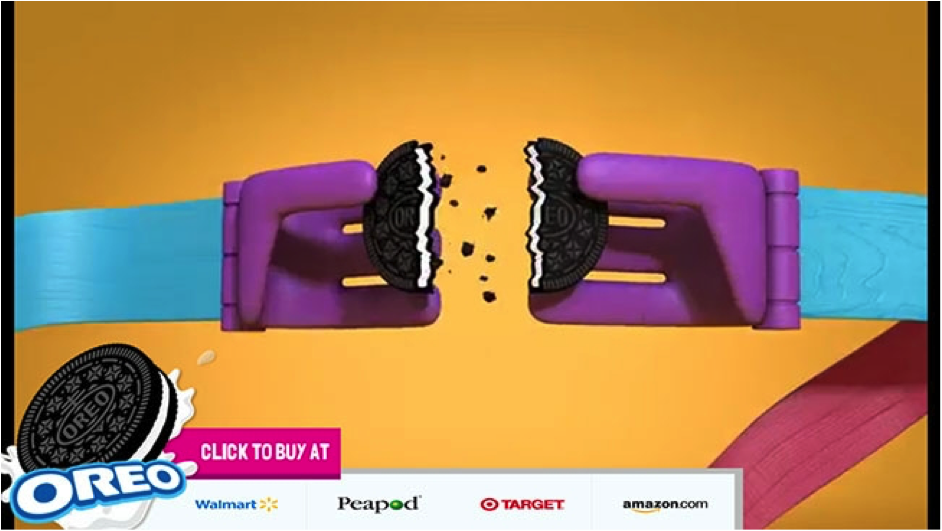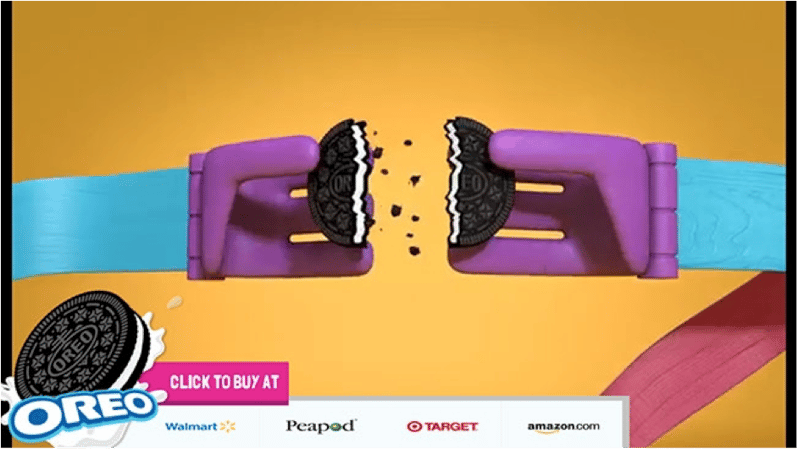


There are many questions about how CPG in grocery will play out online, particularly around impulse-oriented categories.
In a transcript of a recent podcast, Profitero’s SVP Strategy and Insights Keith Anderson speaks to Neil Ackerman, Global eCommerce Director at Mondelez. Previously, Neil was General Manager of Amazon’s Small and Light Program
In this episode, Keith and Neil discuss how to activate impulse merchandising in a digital world, and why supply chain and logistics are so important to economic sustainability in the online channel.
Q: Welcome Neil, I’ve really enjoyed the conversations you and I have had previously and for a lot of reasons, I think you’ve got an interesting perspective on eCommerce. You are now at Mondelez, one of the leading and largest CPG companies, and a company that participates in several impulse-oriented categories. Where do you see impulse buying headed broadly but, especially, where do you see it headed online?
I have a very emotional attachment to impulse buying. When I started at Amazon, one of the biggest impulse buys was items under 10 bucks. One of my big responsibilities and inventions there was launching the Amazon Small and Light Program, which allows sellers and Amazon to ship items that are under 10 ounces for free to customers around the world. There were many patents and many inventions to make that happen, but the big insight for me was that millions and millions of items that are under 10 bucks are being bought.
In today’s digital world, impulse buying is a verb. You have to impulse the consumer to buy and you have to win the screen. The company that wins the buy box, wins the sale from the consumer. These are the things that really made me think much more about impulse buying. This is one of the reasons why I was pretty excited to join Mondelez because they have a history of products that are impulse-driven. I have a history of loving and creating invention around creating impulse moments and making impulse buying a verb.
Targeted precision leads to the buying decision. I have this sign in my office all the time. A little rhyme and seven words that I have my whole staff live by. A buyer’s impulse requires data science. If you know your shopper and you know the offer that would speak to them at exactly the moment that they’re on that web page, then you just made an amazing fit. Because with that precision, they’ll lead to the buying decision. That has exactly been our mantra of creating impulse buying online.
There are three elements in regards to making targeted precision leading to a buying decision. Yes, you have to know your consumer, but that’s the top of that first element. Within that element, you have to understand what they shop for together in the cart because when you find this, you could learn what people are buying with your products.
In the case of, let’s say, Mondelez, a very large segment of people like one type of variety pack. With data research, you then find out, well they also tend to buy another product with this variety pack. As a result of that, when you know what people are tending to buy with your products that are maybe even outside your category, you can facilitate an impulse. Right on the digital screen when they go to that non-relatable item and you know that that item is actually suited to consumers who, let’s say, eat Oreos. Now you can create some real magic.
Knowing your customer and having the link between glanced views of items is just an amazing pot of gold. That has been something that has led to some double-digit improvement in conversion, but it’s not just that one element. Because unfortunately, like life, one thing doesn’t do it all. Because as we said, you have to target your precision to get that decision.
The second thing you have to do is you have to make critical pairings. Dive in to your data. What else is bought alongside your brands. Discover the natural fit, right? Then by using this data, you can trigger a purchase of a pairing. Let’s say, someone likes chocolate and they’re buying something that’s similar to chocolate or that would go along with chocolate. Then you create the moment on a one-screen world where they’re buying X which goes with chocolate and so you display that to the consumer and, boom! That critical pairing works and it works almost all the time.
The third part is, you have to actually create the impulse moment. A few years ago, while I was at the Small and Light Program in Amazon, I was at Home Depot. I had to buy some wood because I was building a little shed. While I was there, my iPhone was dying. Right next to the register were little iPhone chargers. It created the perfect impulse moment. They know I’m waiting in line. They know I have my iPhone.
They had precision targeting. They knew the data. They knew that it was iPhones that people were using, not another phone. They knew what kind of people would be in Home Depot. They knew that they’d be on their phones. They knew that chances are, batteries are dead because people are searching Home Depot for items and doing all these types of searches on how to build a shed. That creates an impulse moment. It was inspiring and it tells me that we have to create impulse moments online at the same time.
I always tell people, the only thing holding you back from being effective at impulse buying is insight into consumers’ needs. Getting the right content to serve to them and then, boom! You can add it to the shopping cart. I call it the new impulse buying and it’s about knowing your consumer, making the critical pairings, and creating the impulse moments that will allow the targeted precision to happen, which will lead to the buying decision of conversion.

Q: If you think about impulse and small and light, I think you’ve set up some of the really key demand-side dynamics. I’m curious if you’ve got thoughts about some of the supply chain implications or the economics of how to deal with small and light items?
About 80% of all items shipped are going to be under the 15-ounce threshold. Almost 80% of all items even made are under 15 ounces.
Table stakes for this will be work on assortment. Get your bundling up. Increase your threshold by combining items together to get your average sales price above 10, 12, 15 bucks. That is not the exciting part of this question because that is the easy answer.
The harder answer is, how do you actually make this magic work with logistics and supply chain? There are two things here. The first is, supply chain in eCommerce is an enabler. It’s an enabler for revenue. Supply chain is no longer a cost center. You have to look at supply chain as a revenue generator for your company. How does that happen? Well, supply chain is actually only made up of three components. Fixed cost, variable cost, and transportation cost. Once you understand those components and work to reduce the cost structure of those components, anything becomes possible.
Let’s say, you want to ship something, a widget, and that widget is $5. Well, the first question will be, what about our fixed cost? Well, we got to find some place that’s very cheap to have this facility that could push out lots of volume because we need the cents per item to be in the pennies. We need this to be under a nickel. A fixed cost per unit. I mean, realistically you probably get close to 10 to 15 cents if you are really good, but you love to strive towards a nickel.
On the variable cost, you got to find a place where labor is cheap. You got to look for those places, and they exist, where labor is not as expensive as other places. If you go outside the US, you could find a place that’s even cheaper. If you can get that down to, let’s say, a dollar or 70 cents a unit when you’re shipping, now you’re getting there.
Then it comes to the art of transportation, right? The art of transportation is saying, “What is my delivery speed? What kind of packaging is it going to be in? How fast does it have to arrive?” I mean, just because Amazon has things arrive in two days, does not mean that an item that’s under $5 needs to arrive in two days. It depends on what it is. The way I look at it is this: if you order something on Amazon in an average town in the US and you do it on a Thursday, you’re not going to get your item until Monday. Because by the time the item goes to the system, they pick it, pack it, and ship it, it comes on Monday. If you order on Friday, it may not even come until Tuesday or Wednesday.
This comes back down to transportation and there are many, many ways of doing transportation. It is not just UPS. I would challenge people, again without giving away the secret sauce here, to take a look at transportation because you’ll find that as you dig deep, there are many ways to ship things, many vehicles to use, and many transportation times to agree to. When you put all those together and you attach your PCOGS – which is your Product Cost Of Goods Sold – on top of that, you’ll find that there’s profitability of between, depending upon your margins, between 50 and 90 cents per unit that you can make on a $5 item.
Now, is that the traditional margins that you would love of 30%? No, but if you have enough units making 15% to 20%, then my guess is, you’ll still be a pretty successful business person. That’s how I think about small and light when the items are under 5 bucks. That’s how I think about it from a supply chain or logistics perspective. That’s why I think that supply chain logistics is an enabler for profitability because when they can do this right, it creates a competitive advantage for you. Just ask Amazon. That’s where I think people are going. Walmart is trying to do the same thing. Walmart is really focused on supply chain because they know that’s where the game is going to be.
People who really know me know that I’m a supply chain maniac. I go to conferences and I’ll talk about the eCommerce flywheel. I’ll be excited to do that and I think it’s important, but nothing gets me more excited than inventing around the supply chain. Because I know that that is the enabler over the next 5 to 10 years as the world gets used to this eCommerce flywheel in grocery and that becomes the average conversation. The differentiation of CPG companies and their ability to facilitate a buy online will be supply chain.
I spend, I would say at this point at Mondelez, almost 70%, 80% of my time on all the supply chain and logistics of import, export, international shipping, delivery options, transportation, distribution centers, in all countries around the world. Just ask Amazon.com and they’ll tell you they’re a supply chain company.

Q: You mentioned Walmart is focused on logistics and where things are headed there, but on a lot of people’s minds are a couple of big M&A deals over the last few weeks. You’ve got a brand that Unilever acquired, Dollar Shave Club. You’ve got Walmart that acquired Jet.com. These are two of the largest companies in their sectors of the industry that are placing huge financial bets on acquiring teams, technologies, brands. Any thoughts on either of these deals?
As far as the Unilever deal with Dollar Shave Club, that’s a terrific example of disruption. Whether Unilever can use that to sell other products on their site, that’s the best part about this. The answer will be in the data. My take on that would be, let’s see if they could turn that into a subscription model for their other products, or let’s just see if they just bought a website with customers. We’ll have to see how they integrate. The key for them is going to be supply chain. Because Dollar Shave Club has subscribers that have brand loyalty. Frankly, they’re a fantastic site but the problem is their logistics and supply chain capabilities. That’s a huge cost structure that has been difficult for them and, by the way for most sites, except I guess, Amazon. That’s where it’s going to be inching to see how they turn a profit and what they do as they scale the Dollar Shave Club.
I think Walmart’s going to get their logistics right. They’re one of the best logistics companies in the world and I would never bet against Walmart. I would say that Walmart’s probably going to figure it out and I will bet that Walmart’s going to be very successful at figuring out a way to leverage their investment in Jet no matter how they do it. I’m just pretty excited to watch them grow because as they grow, that means eCommerce grows. That means more of the world is using their laptops, mobile phones and tablets to buy things. I think that’s just a good thing for the whole industry.
History repeats itself in this industry. We recently went back and looked at every single category that Amazon has launched over the last 20 years. They all started just like grocery and snacks. They all started at 1% or 2% share. In every case, we found articles that said, “They’ll never grow online in every single category.” Fashion, sporting goods, lawn and garden, books and media. Every single article said the same thing. Then as predicted, in every single case as it hit 5%, 6% share, the number of articles dropped drastically. As it hit 6%, 7%, 8%, 9% share, it was was an unstoppable machine.
Just ask Macy’s. They said, “No one will ever buy clothing online.” Then Amazon announces in 2016 that they’re going to have more sales than Macy’s for fashion. Macy’s says, “How did that happen?” It’s the same story and I’m watching it. We are watching it in grocery and it’s here. We’re at 1%, 2%, 3% share. You can argue about the percentage. It doesn’t matter. The point is it’s low. But that hockey stick is going to form and over the next 18 to 24 or 30 months, everything is going to change.
Q: The reason I think it’s so productive to get some of your perspective is, if you’re at a company or even worse, if you find yourself repeating some of those statements from articles like the ones that Neil just outlined, you’ve totally missed it. The question is not, “Is it going to happen?” It’s “How is it going to happen and how can we accelerate it and play a role?”
I enjoyed this conversation too, Keith. I love talking about impulse buying. I love talking about small and light. I love supply chain. For me, this was just a refreshing and fun podcast with topics that aren’t always spoken about in podcasts. A lot of podcasts focus on the fundamentals and I liked how we got a little bit deeper into some of the more complex issues and didn’t just say some words and go in circles. I think we actually had some real points that people can take down, write down, and then go start figuring out what they want to do with these things.
Q: If people want to reach you, what’s the best way for somebody to connect with Neil Ackerman?
The best way to get me is on LinkedIn and you can link me in there: Neil Ackerman. Or you can just email me. I answer all my emails. I love talking to people, I always respond quickly and I love to talk about different ideas. My email is nsackerman@outlook.com. I live in Seattle so of course I have to have a little bit of Microsoft over here.
To hear other industry thought leaders discuss the latest eCommerce trends impacting the CPG and retail sector today, listen to the Profitero Podcast Series.


























